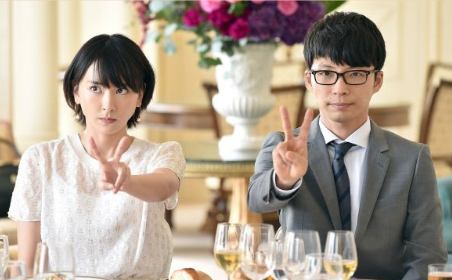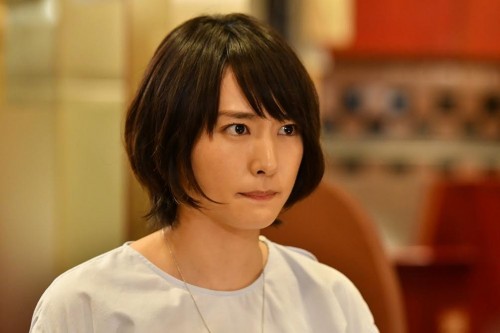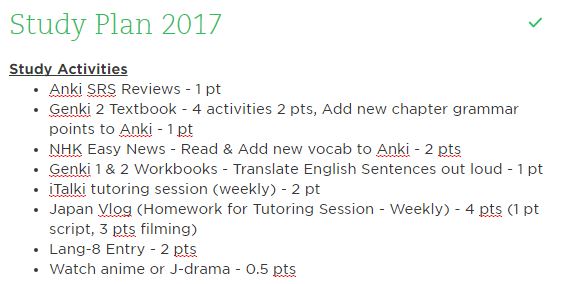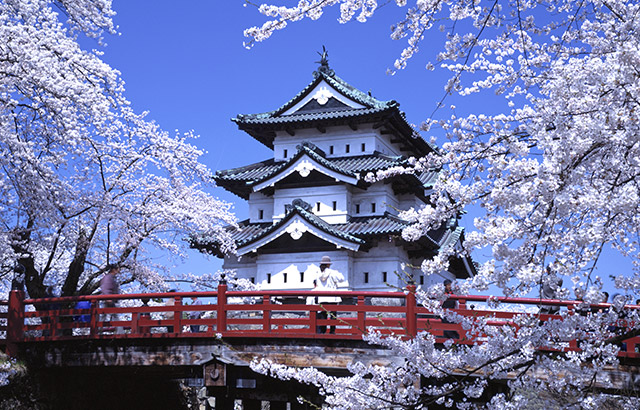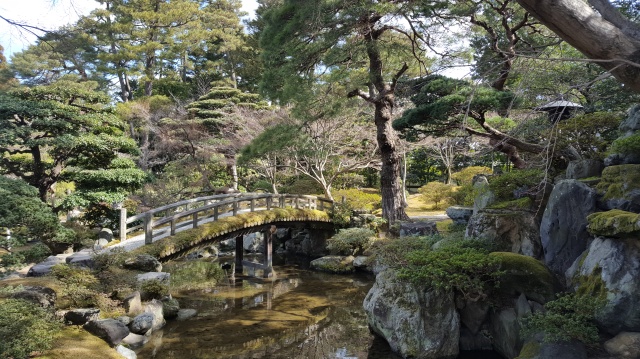
It’s insane to believe that my first trip to Japan has already come and gone. Last month, I traveled to Tokyo and Kansai for 9 days and although there were a few complications, I had a great time. I wanted to share my thoughts and reflections on this trip, which had been a dream for over 5 years, since first starting this blog.
I wasn’t sure how to organize the post since I have so much to say, so I will go prefecture by prefecture and share my itinerary and highlights of each.
Background Info
Just wanted to provide a little info about how I planned the trip overall. It was just me and my mom on the trip and I went through an online travel service that is known for small tour groups. I wanted the freedom to plan my own itinerary, so we went for an individual tour instead, where we traveled solo but met up with guides along the way. I received an info pack with travel details and tips and we were mostly left to our own devices. When I return to Japan, I think I’ll have enough information to book everything on my own for cheaper, but I loved the idea of tour guides and plan to book some for any of my trips in the future.
Itinerary
- Day 1 – Land at Narita Airport, free day in Tokyo
- Day 2 – Tokyo – 4 hour private guide
- Day 3 – Hakone – Ryokan stay
- Day 4 – Kyoto – Gion Night Walking Tour
- Day 5 – Kyoto – 8 hour private guide
- Day 6 – Kyoto – Meet up with friends
- Day 7 – Kyoto –
Day Trip to Hiroshima In bed sick 😦
- Day 8 – Osaka – Izakaya Tour with private guide
- Day 9 – Travel to Narita airport
Tokyo

I didn’t get enough time in Tokyo to form a solid opinion, and I knew this going in, but I experienced a lot in a short time. Upon arrival to Narita, a private driver was waiting and took us to our first hotel. Check-In was a breeze as everyone who worked there seemed to have a near perfect command of the English language.
On the first night, I followed the advice I had read about jetlag and forced myself (and mom) to stay up until the late evening. I had my first convenience store onigiri for lunch and for dinner we ventured out to Sarashina Horii, a soba restaurant featured on Anthony Bourdain’s tv show.

Our first dinner in Japan – Soba at Sarashina Horii
After getting some much needed rest, the next morning we met our tour guide in the lobby of our hotel. She took us on a 4 hour tour, which took us to both traditional and modern areas of Tokyo. We visited the grounds of the Tokyo Imperial Palace, Asakusa, and finished off in Harajuku. I didn’t anticipate how much I enjoyed Sensoji temple in Asakusa, given how crowded it was. Of course the temple and its history was fascinating, but I also got to try lots of traditional sweets and did some souvenir shopping.
Given that I was only in the city for 2 days, I missed out on the major tourist spots like Shinjuku and Shibuya, but since I had such little time I’m glad I spent it where I did. I would love to come back and spend more time here in the future.
Hakone

One of my bucket list items was staying in a ryokan with a private bath, and my tour agency managed to book one without gouging my wallet. The building was quite old, but beautiful and I had the full experience of the onsen bath and traditional meals, which were served in a dining room. The surrounding town was also fun to explore and the people were notably friendlier than in Tokyo, which was to be expected in a small town. It was a nice change of pace, although this was the first day I got terribly ill with laryngitis. It wasn’t very comfortable to sleep in a somewhat drafty room on futons while being in this state, but I know I wouldn’t have minded otherwise. I also wouldn’t recommend the kaiseki meals to picky eaters. It was tough getting my mom to eat anything, but I was in heaven.
Kyoto

Yes, a real maiko!
We took a 2 hour bullet train from Hakone to Kyoto and this is where we spent the next 4 days of the trip. After getting settled in our hotel (which was in an amazing location btw) we walked over to Gion to begin our private night walking tour. I’m very interested in geiko and maiko culture, so I learned a lot. We planned the trip to Japan so we would arrive during the sweet spot right before cherry blossom season and having empty streets to ourselves in Gion wouldn’t have happened otherwise. We were also lucky enough to spot 2 maiko on their way to appointments and I caught up to one long enough to take the photo above. It was a magical experience and one of my most memorable.
This night also included my favorite meal of the trip. When I tell Japanese people, they’re usually surprised as I believe the place where I had it was a small restaurant chain, but it’s definitely a local favorite. It was Tenkaippin’s kotteri ramen, which had a very rich and thick chicken broth that was unlike any other ramen I’d tried before. I couldn’t quite experiment with ramen in Japan since my mom is not into soups, but this place served other items so we were both happy.

Kotteri ramen – my favorite meal in Japan
On the next day, I had almost lost my voice, but was still excited for the 8 hour tour guide we had booked. We first visited the Kyoto Imperial Palace, where I took one of the most beautiful photos I’ve ever taken of the royal garden (see first photo above). People still don’t believe it’s something I took, but no skills or fancy camera was needed for something so breathtaking. After the palace, we headed over to Arashiyama. I had previously planned spend a full day there, but I cancelled plans to meet up with a friend the following day. I was pleasantly surprised when our guide gave us the option to visit, even if just for a few hours. Arashiyama is definitely a must-visit for the bamboo forest alone, but everywhere you look when you’re there you’ll find something worth seeing. The gardens, temples and shops all make it a worthwhile time and I could have definitely filled a whole day with activities there. We left Arashiyama to have lunch and visited our last 2 sites of the day, which were Kodaiji temple and Nishiki Market. Kodaiji was a beautiful temple and with an interesting history and Nishiki was a good experience but much too crowded for my liking. We were returned to our hotel a little early since I just didn’t feel good at all. It was a great day and I powered through my sickness, but I fell asleep in the early evening and didn’t get to experience anything else that day.
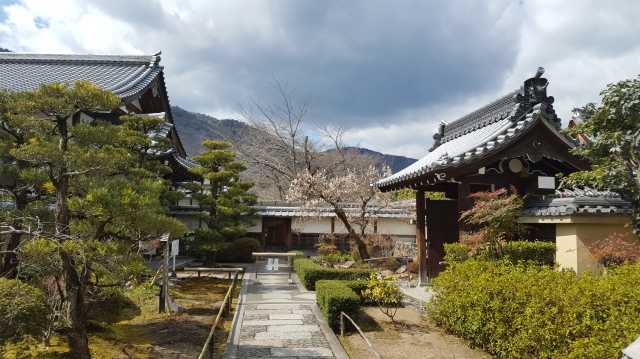
A garden at Arashiyama
As terrible as I felt, I was very excited for day 6 since I had a friend coming to visit. I scheduled my mom a much needed massage appointment while my friend and I headed out to explore the surrounding area and eat the food my mom wasn’t adventurous enough to try. We had sushi at a conveyor belt sushi food chain and Kyoto-style crepes at a small crepe stall. My voice was almost completely shot so we had to skip karaoke, but she did take me to used bookstore Book Off where I bought about 6 cds in great condition for a great price. In the evening, we met up with one of her Japanese friends and we reminisced about seeing our favorite group Girls’ Generation in past concerts over some delicious tonkatsu.

Day 7 was very uneventful. I had planned to take the shinkansen to Hiroshima to see the museum and memorial park as well as have some Hiroshima-style okonomiyaki. I was feeling so ill that I just wasn’t up for it, so spent the entire day sleeping and only had a small snack. It really was a shame that the antibiotics killed my appetite in Japan of all places and I didn’t get to eat as much food as I usually do!
Osaka

Our final full day in Japan was spent exploring the Dotonbori and Nanba sections of Osaka city. After hearing mixed reviews on Osaka, I decided to book a private guide myself to make sure I got the best out of my time there. The tour agency did not book us a guide here and I went through another site. I booked the Izakaya pub tour and it did not disappoint! Our tour guide was an older retired teacher and he first took us to explore Shinsekai, a charming part of the city that was previously built to be a representation of a modern Japanese city in the early 20th century, but today is just a relic. We then went to 3 different pubs where we tasted lots of quality sakes and tried adventurous pub foods. My mom couldn’t eat much of it, but she still had fun and said it was her favorite tour. The sumo championships were going on at the time, so it was a uniquely Japanese experience to sit at a pub, sipping sake with the locals while they cheered their favorite wrestlers on the screen. I especially loved the standing pub, which I thought I would hate since we were standing the entire time, but the atmosphere was so fun and people were friendly. For the first time since we had arrived, strangers were trying to make conversation with us. I’m sure the alcohol had something to do with it 🙂 It was a great evening and both the tour guide and I ended up drunk. It was such a small taste of Osaka nightlife and I’d definitely come back and do another tour or bring some friends and make a night of it.
Final Thoughts
My trip to Japan was great, but of course there are things I would do differently. If I were to do this trip again, I would add at least a few days, book the travel myself now that I’m more familiar with where to go, and not try to fit as much in. I would spend more time in both Kyoto and Osaka and now that I’ve stayed in a ryokan, I think I’ve gotten it out of my system. I really did like Tokyo, but I’m thinking I would set my homebase in either Kyoto or Osaka and stay in only 1 hotel or 2 tops if possible. Now I know it’s quite easy to travel via the bullet train. Both Kyoto and Osaka are near each other, and day trips to places like like Himeji, Kobe and Hiroshima are doable from there. Also, I originally chose the length of my trip so that I could help ease myself back in with the jetlag, but honestly there was no easing in as the whole week back at work was tough. I could have sacrificed a few more days for some more unforgettable experiences. Another thing to remember is to choose your travel partner wisely! My mom was not up for all the walking and not a big fan of a lot of the food. Next time, I’ll be taking a fellow Japan foodie whose prepared for the long days.
Oh and I almost forgot! This is a language blog right? I did get to practice some Japanese, but for the most part I learned it’s not really needed for tourists to enjoy their experience. I got a lot of people talking to me in English when I tried practicing, but did get to have a few simple conversations here and there. I also got a TON of listening practice in though, both in person and by watching Japanese variety. It was great being surrounded by the language 24/7, and I could see myself picking it up a lot faster if I were ever to move there.
So, that was about it for my first trip to Japan! Have you ever been? Have you been dying to go for the first time like I was? Leave any questions or comments below.
L












